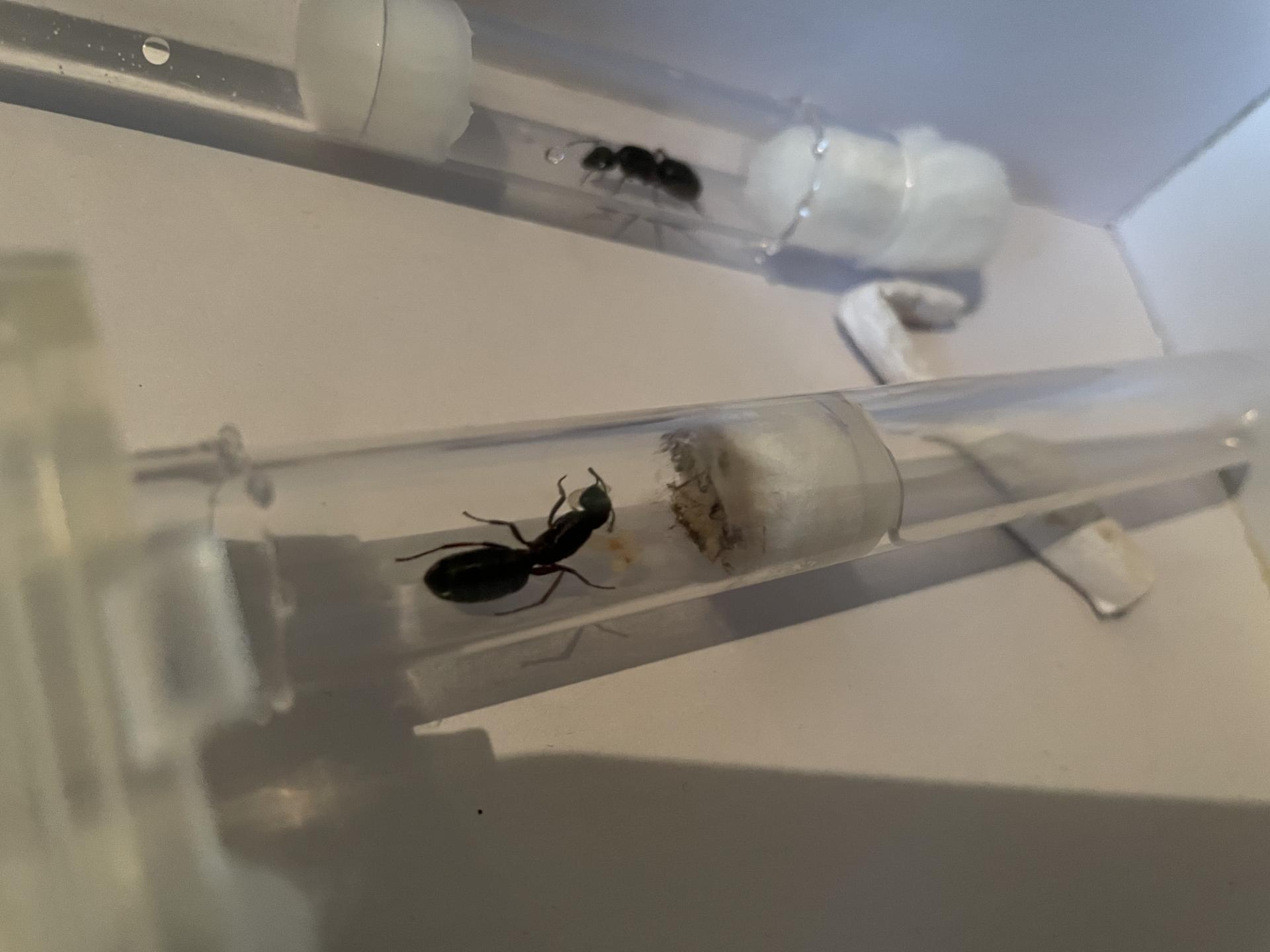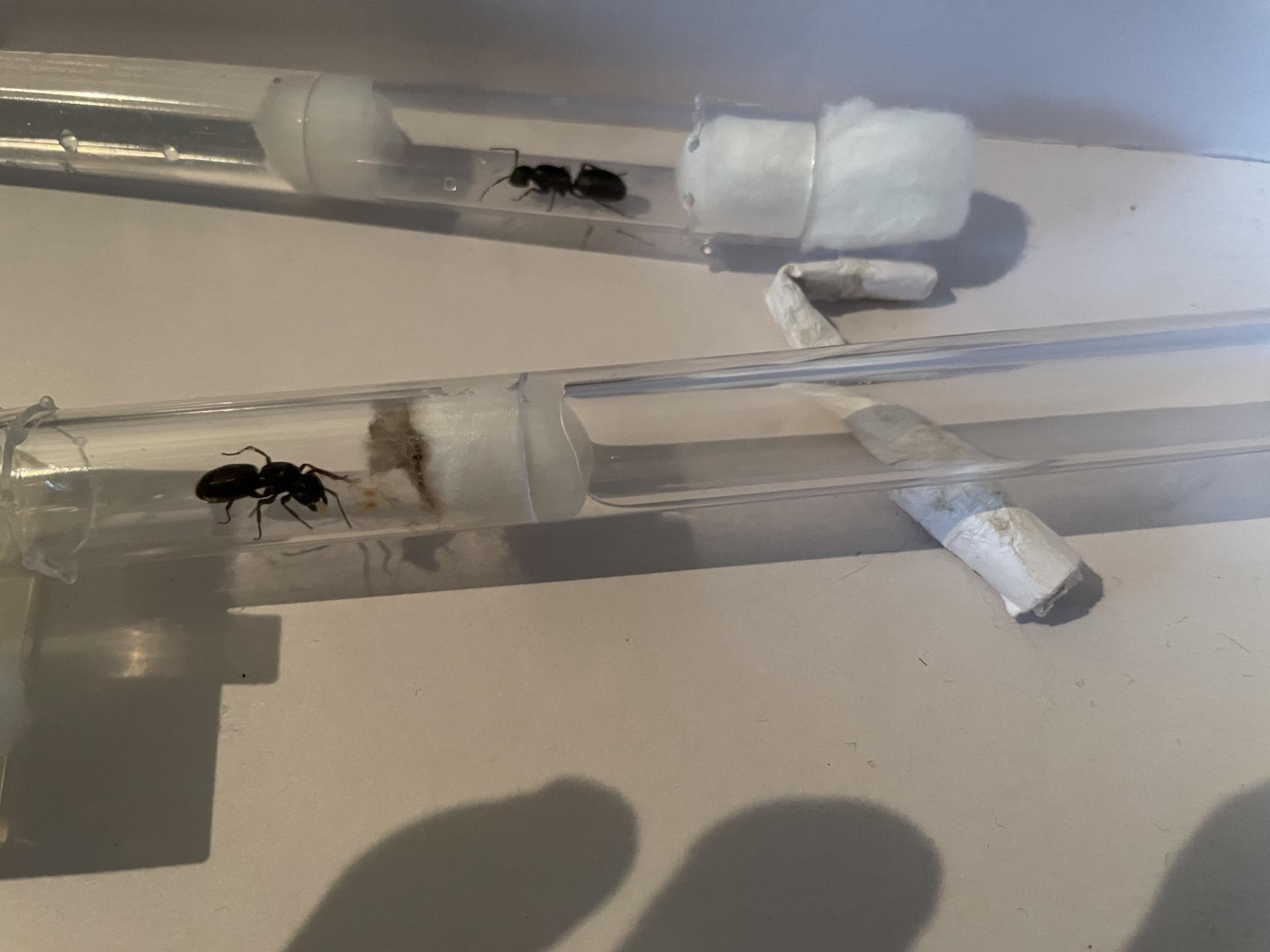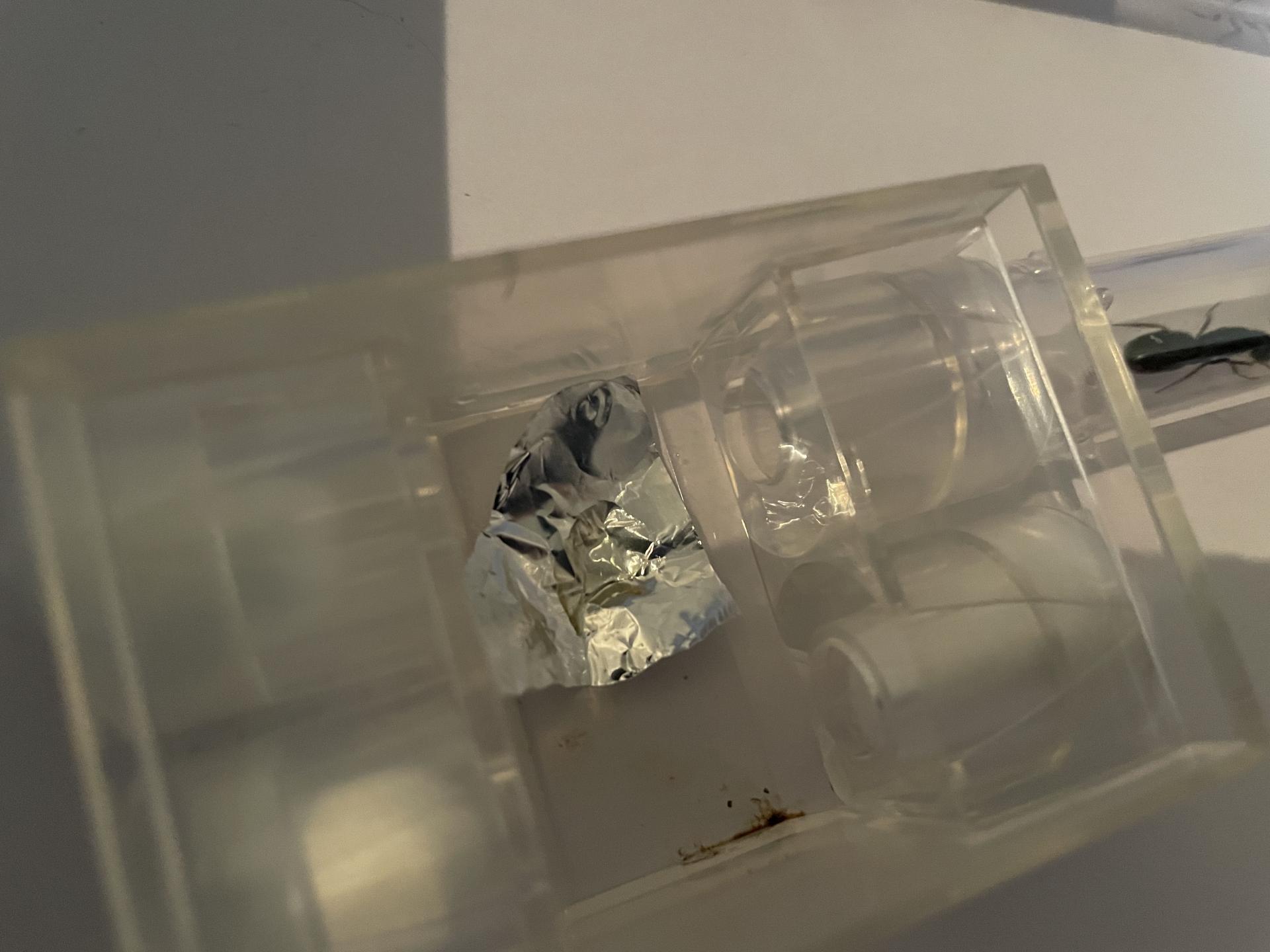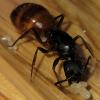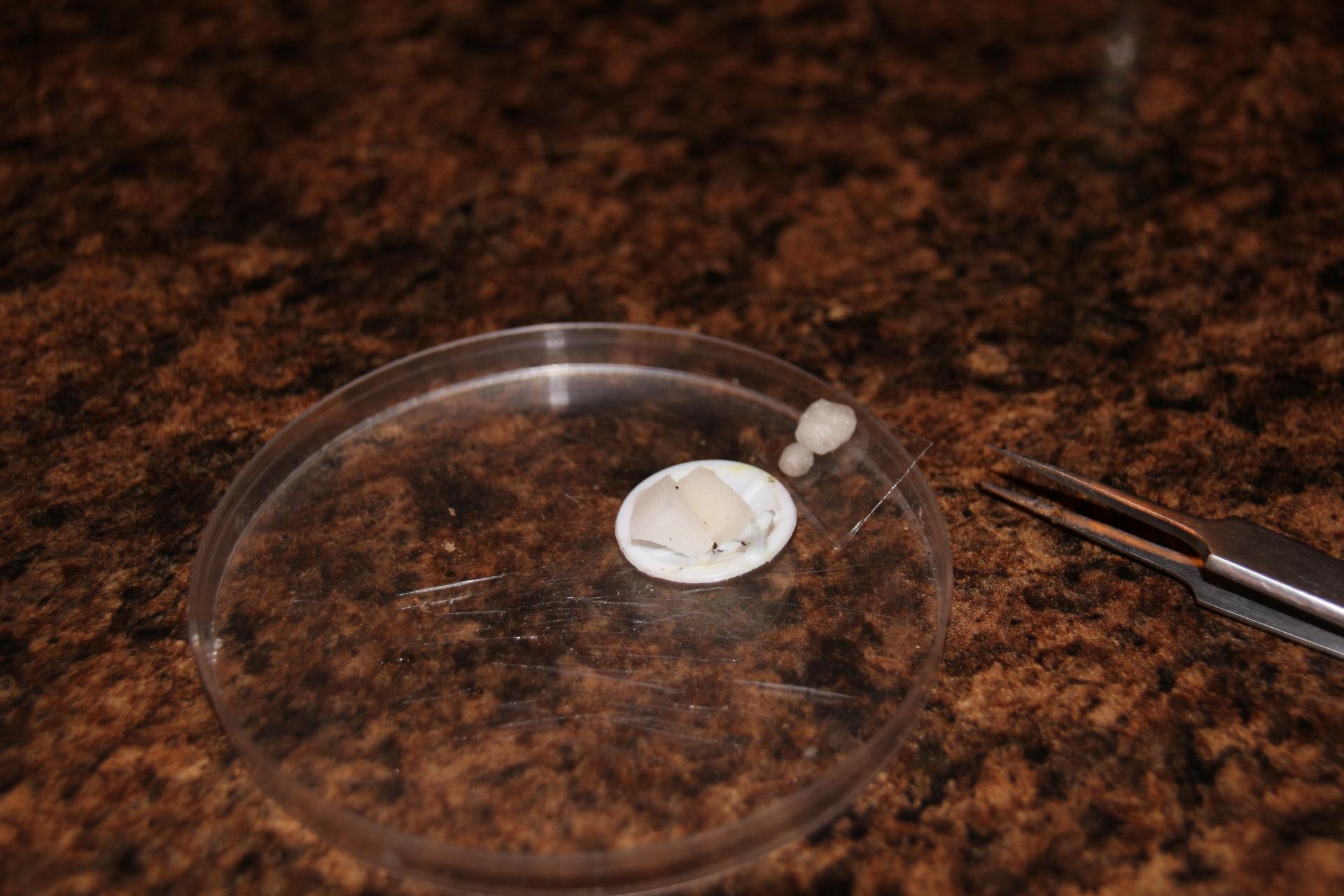I am concerned because her original test tube is running out of water. Still has a little bit left. Looks clear still. I took great care in keeping everything as clean as possible during test tube creation. If you refer to images you can see I have got a bit of mold as well, it’s not the worst I have seen…. But the mold side does look like it’s drying out.
In her feeding area I have provided watered down honey incase she needs to feed, but have no evidence that she has.
Can some one advise on how this looks? Should I be concerned on getting her some where cleaner? And if so how do I do that? Was thinking taping 2 tubes together so she can move to the cleaner one if she feels the need. Oooor just start providing wet cotton wool in her feeder area so she can get fluids.
I just really don’t wanna loose her. Takes so long and patience to get them this far
